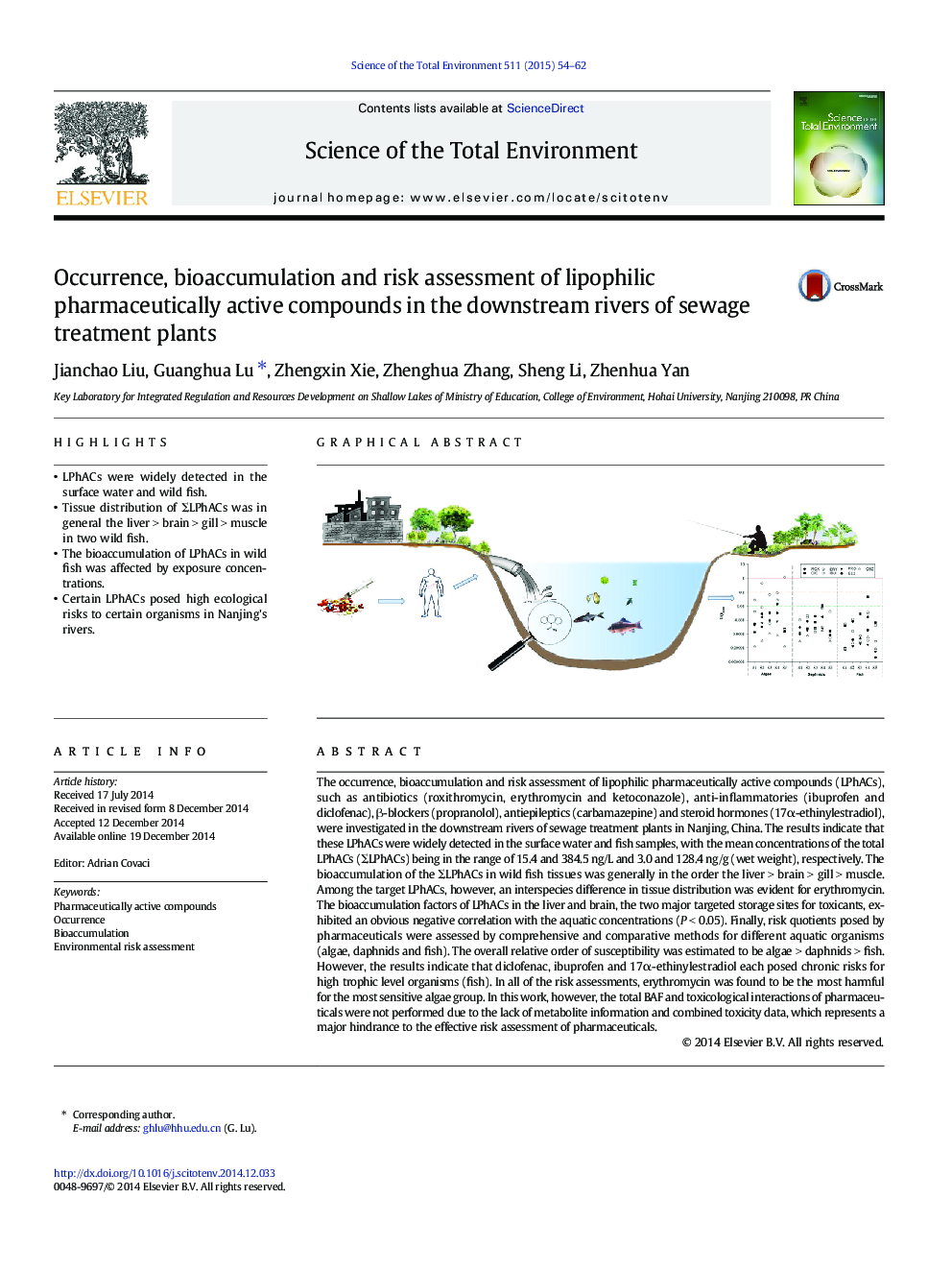| کد مقاله | کد نشریه | سال انتشار | مقاله انگلیسی | نسخه تمام متن |
|---|---|---|---|---|
| 6327404 | 1619766 | 2015 | 9 صفحه PDF | دانلود رایگان |
- LPhACs were widely detected in the surface water and wild fish.
- Tissue distribution of ΣLPhACs was in general the liver > brain > gill > muscle in two wild fish.
- The bioaccumulation of LPhACs in wild fish was affected by exposure concentrations.
- Certain LPhACs posed high ecological risks to certain organisms in Nanjing's rivers.
The occurrence, bioaccumulation and risk assessment of lipophilic pharmaceutically active compounds (LPhACs), such as antibiotics (roxithromycin, erythromycin and ketoconazole), anti-inflammatories (ibuprofen and diclofenac), β-blockers (propranolol), antiepileptics (carbamazepine) and steroid hormones (17α-ethinylestradiol), were investigated in the downstream rivers of sewage treatment plants in Nanjing, China. The results indicate that these LPhACs were widely detected in the surface water and fish samples, with the mean concentrations of the total LPhACs (ΣLPhACs) being in the range of 15.4 and 384.5 ng/L and 3.0 and 128.4 ng/g (wet weight), respectively. The bioaccumulation of the ΣLPhACs in wild fish tissues was generally in the order the liver > brain > gill > muscle. Among the target LPhACs, however, an interspecies difference in tissue distribution was evident for erythromycin. The bioaccumulation factors of LPhACs in the liver and brain, the two major targeted storage sites for toxicants, exhibited an obvious negative correlation with the aquatic concentrations (P < 0.05). Finally, risk quotients posed by pharmaceuticals were assessed by comprehensive and comparative methods for different aquatic organisms (algae, daphnids and fish). The overall relative order of susceptibility was estimated to be algae > daphnids > fish. However, the results indicate that diclofenac, ibuprofen and 17α-ethinylestradiol each posed chronic risks for high trophic level organisms (fish). In all of the risk assessments, erythromycin was found to be the most harmful for the most sensitive algae group. In this work, however, the total BAF and toxicological interactions of pharmaceuticals were not performed due to the lack of metabolite information and combined toxicity data, which represents a major hindrance to the effective risk assessment of pharmaceuticals.
Journal: Science of The Total Environment - Volume 511, 1 April 2015, Pages 54-62
